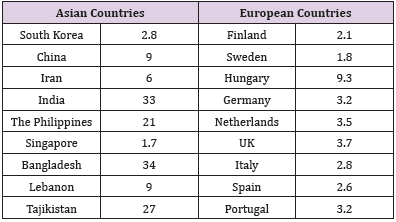Introduction
Children are facing a new lifestyle as compared with their previous generations because of better access to medications and pediatrics. Lowering death rate is widely observed in many Asian countries, culminating in aging of population in those countries. Many factors are responsible for the change approaching. Increasing education and schooling within all classes of people and age groups starting since 1950, plays a good role. Educational basis is counted as a starting point to affect health and life of a great number of babies being born in the past two decades. Another factor responsible for the health and survival of babies and children in Asian countries is related to the quality water. Previously, polluted water used to kill many children through diarrhea. Despite all the educational and socialization upheavals towards children, violence against children is still observed in many Asian countries. In that, children occasionally face physical and psychological abuse and injury in different forms according to socio-cultural backgrounds, neglect, child labor, and even sexual abuse in some cases. The agents may include parents and other close family members. However, promotion of educational and socialization standards has highly lowered such a behavior. Domestic violence is currently known as a negative value and anti-social behavior within families in many larger cities in Asia. As found out, children who usually grow up in a violent home, and in an atmosphere of family violence, are more likely to suffer abuse compared with children who have a peaceful home life. As searched in some countries such as China, Egypt, Mexico and South Africa, there is a correlation between violence against women and violence against children [1]. However, mothers continue to play a primary role in bringing prosperity to their children, and the entire process contributes to the happiness within families. Therefore, raising the status of women by empowering them highly affects children’s well-being.
As mentioned earlier, medical care of infants and children has highly improved due to advances in science and technology. Cyclically, new generations of babies and children, and the cycle in this way continues as such. Sociologically speaking, standards. are ever changing as far as the health of children are concerned (Table 1). Countries in Asia while receiving fewer newborns, they are more investing on pediatricians. This process is happening in many Asian countries. Many Asian countries are even more advanced than the European countries. Many Asian countries confronting shortage of natality to which the governments concerned do not feel comfortable. The framework of family formation is not doing well and in time. So, the legal newborns are in shortfall in many parts of Asia.
References
- (2007) The State of the World Children. Unicef, Geneva, Switzerland.
- (2020) World Population Data Sheet. Population Reference Bureau, New York.

 Mini Review
Mini Review
